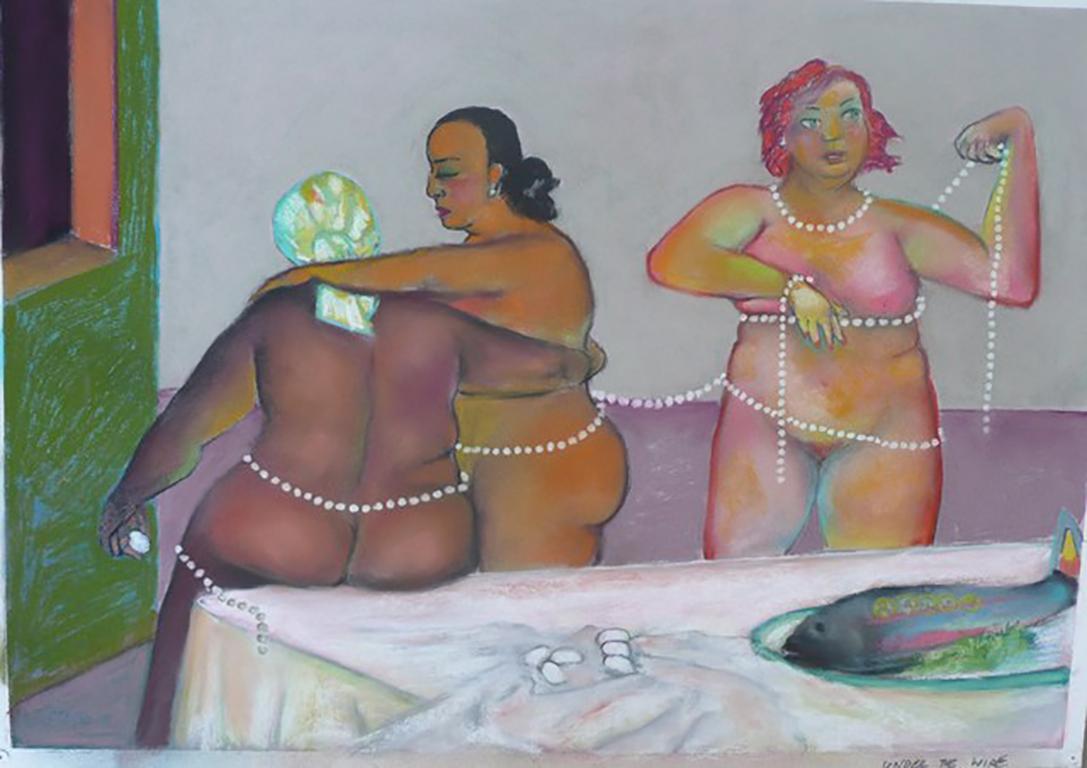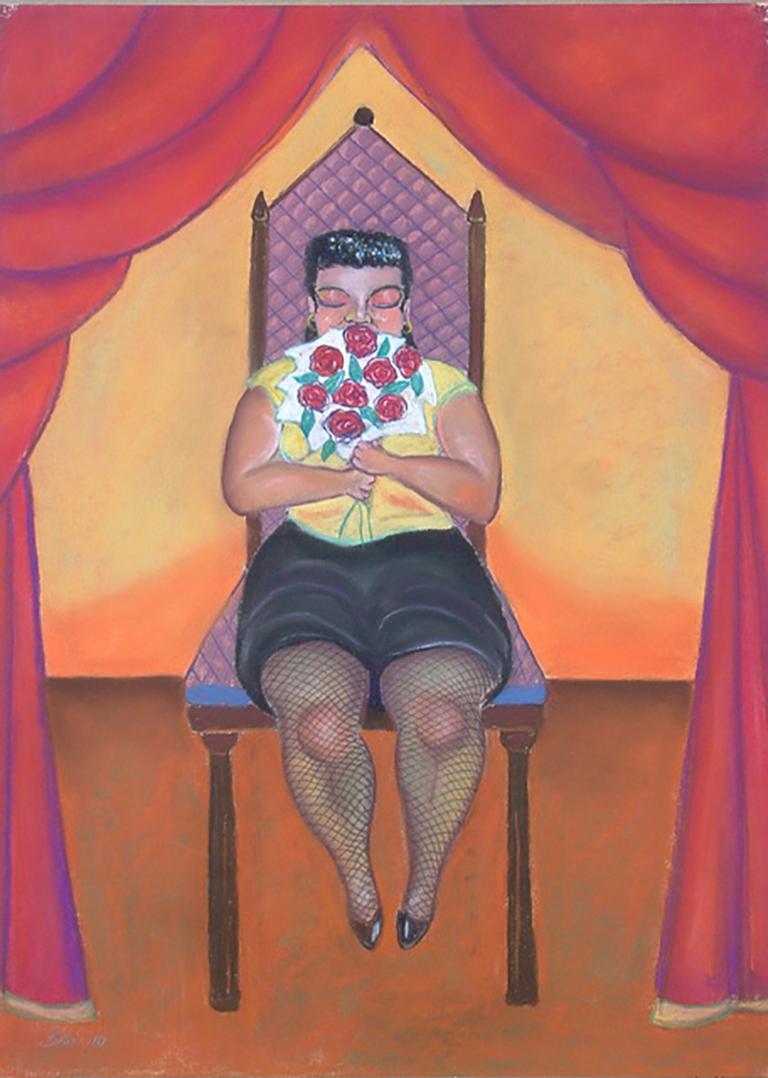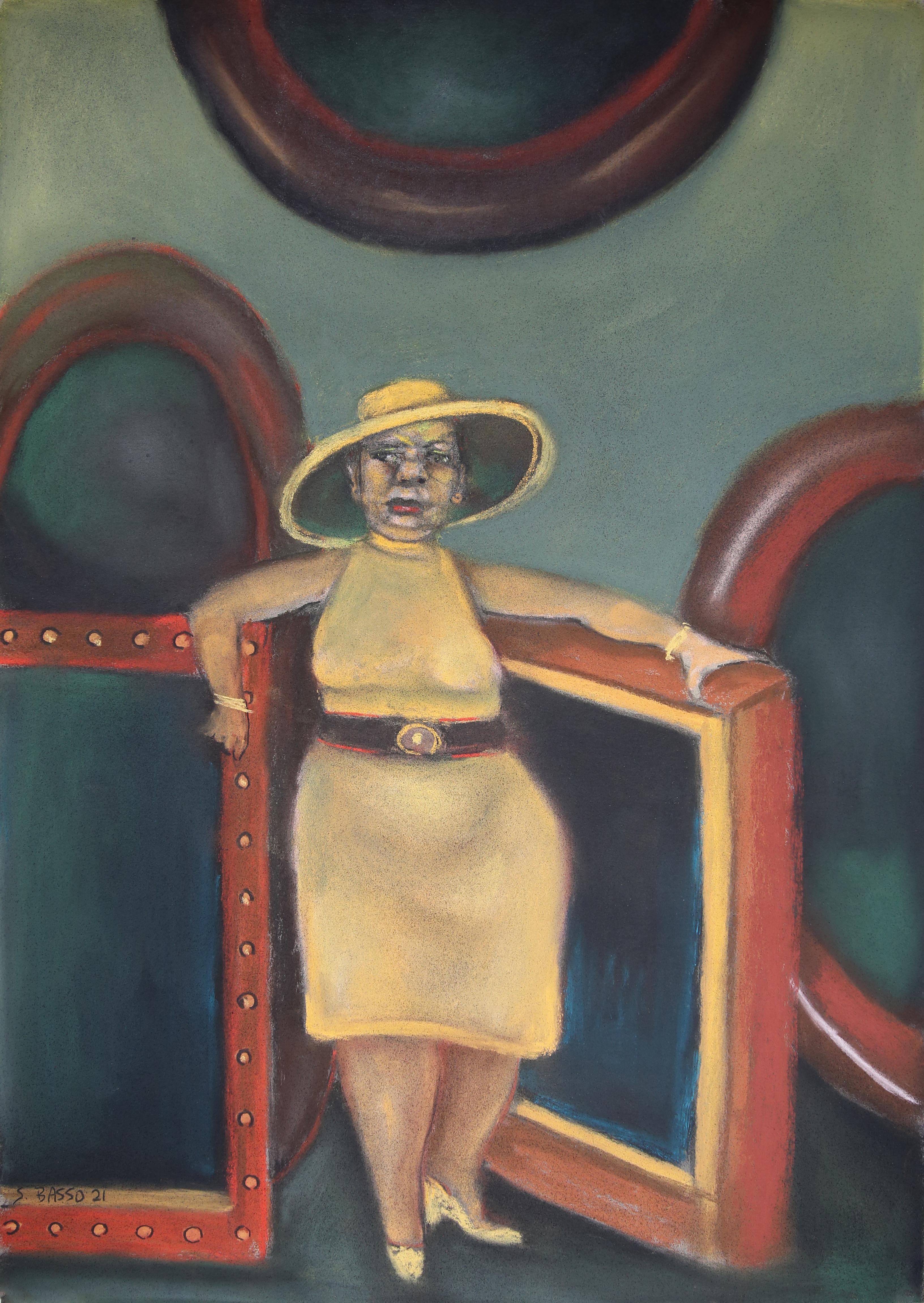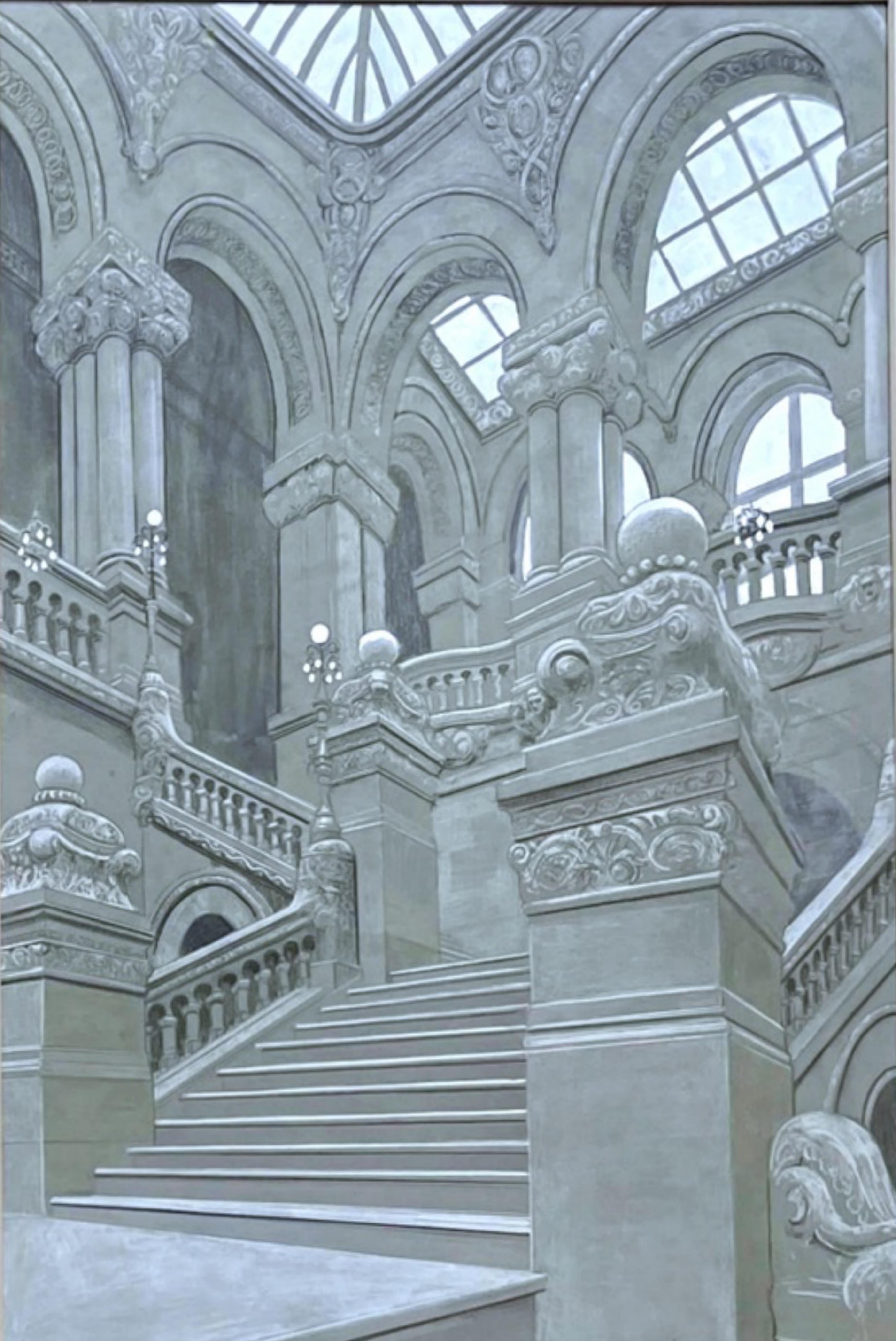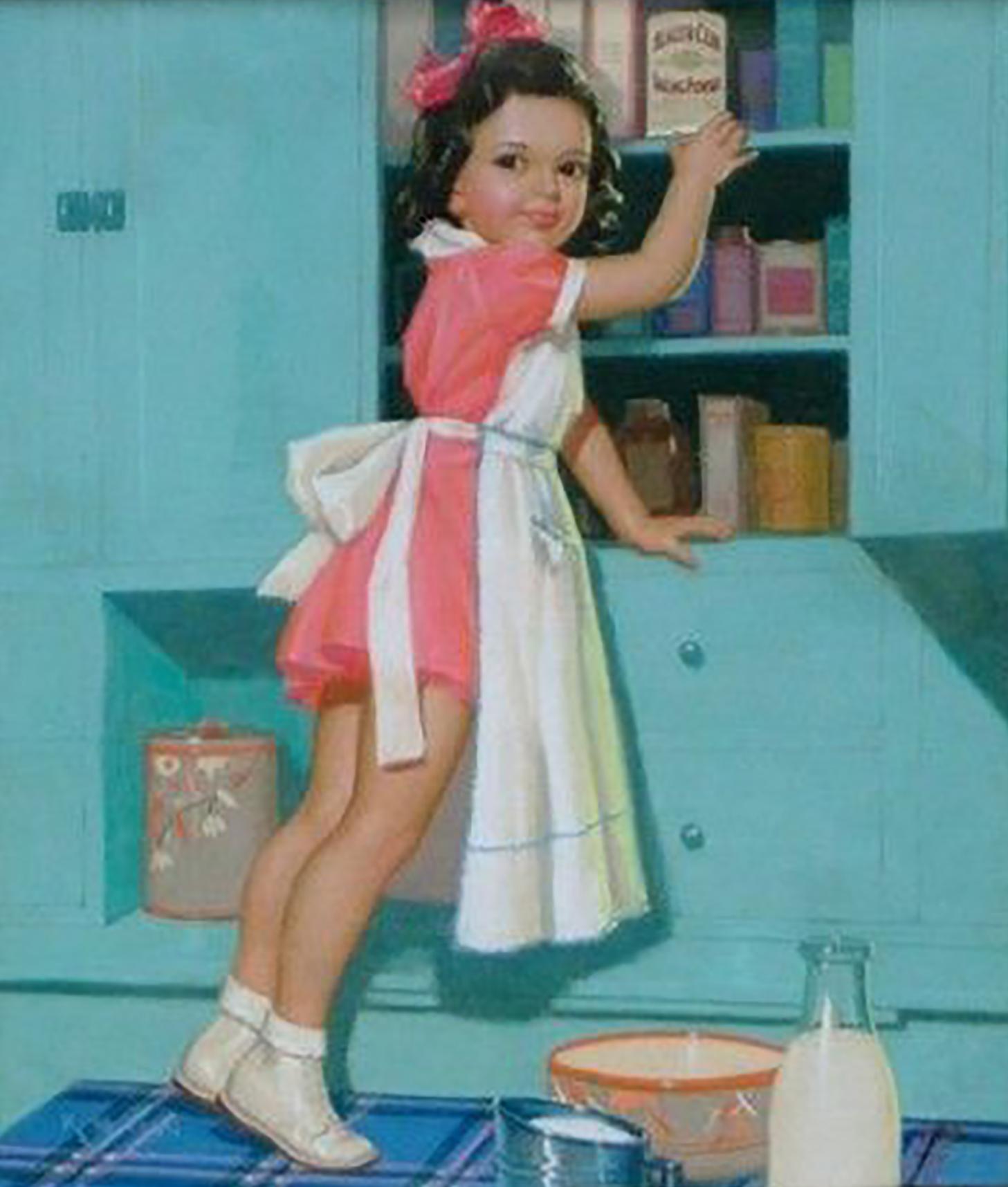Items Similar to L V Guirand de Scevola (1871-1950) A Man writing at his desk , Signed pastel
Video Loading
Want more images or videos?
Request additional images or videos from the seller
1 of 8
Lucien-Victor Guirand de ScévolaL V Guirand de Scevola (1871-1950) A Man writing at his desk , Signed pastelcirca 1920
circa 1920
About the Item
Lucien-Victor Guirand de Scevola (1871-1950)
A Man writing at his desk, 18th century interior scene
Pastel on paper
Signed upper right
20.5 x 15.8 cm
Framed under glass : 37 x 31.5 cm
It is known that Guirand de Scevola was very interested in the Palace of Versailles and its Old Regime atmosphere, that he often painted it and that he participated in the Versailles Revival movement at the beginning of the century. This probably led him to paint scenes in the 18th century style, for which he was particularly well known and which are still sought after.
What is striking is the modernity of the execution of our pastel, which obviously contrasts with its subject in the style of the 18th century. Guirand de Scevoal is a great colourist and he proves it here with eclat, by building up his composition with white pastel highlights, contrasting with brown and black. There is something of the northern painters in this treatment of light. All this, as always with him, is very subtle. The light radiating from the window is almost an abstract notation, but it gives meaning to this interior scene.
Lucien-Victor Guirand de Scévola ( 1871 – 1950) was a French painter.
He was student of Fernand Cormon and Pierre Dupuis at the École des Beaux Arts in Paris.
De Scévola art is remarkable for his silky, velvety and smooth style.
The very first part of his career was marked by symbolism, but he later developped his own language, his Art Deco like bunches of flowers are the best known. He was also a great portraitist for the socialites and aristocrats of the period.
He is also known as the head of the Camoufleurs (the French camouflage department) during the First World War, which was responsible for the invention of this widely used military technique.
- Creator:Lucien-Victor Guirand de Scévola (1871 - 1950, French)
- Creation Year:circa 1920
- Dimensions:Height: 8.08 in (20.5 cm)Width: 6.23 in (15.8 cm)
- Medium:
- Movement & Style:
- Period:
- Condition:
- Gallery Location:Paris, FR
- Reference Number:
About the Seller
5.0
Platinum Seller
These expertly vetted sellers are 1stDibs' most experienced sellers and are rated highest by our customers.
Established in 2018
1stDibs seller since 2019
210 sales on 1stDibs
Typical response time: <1 hour
- ShippingRetrieving quote...Ships From: Paris, France
- Return PolicyA return for this item may be initiated within 14 days of delivery.
More From This SellerView All
- 20th century French school, Colonnade in ruins, watercolorLocated in Paris, FR20th century French school Colonnade in ruins, watercolor on paper 37 x 26 cm Framed in a highly original way between two sheets of Plexiglas (a small, barely visible spot on the bl...Category
1960s Post-Modern Interior Drawings and Watercolors
MaterialsWatercolor
- 18th Century Roman School , A Palazzo with antiques, drawingLocated in Paris, FR18th Century Roman School A Palazzo with antiques Brown ink and pen, brown ink wash on paper 12.5 x 20 cm Framed : 28,5 x 35.5 This nice drawing represents a genre scene, with a nobleman, priests, a mother and her children...Category
Early 18th Century Old Masters Interior Drawings and Watercolors
MaterialsInk
- William Moritz (1816-1860) An historical scene, drawing signedLocated in Paris, FRWilliam Moritz (1816-1860) An historical scene, signed lower left Brown ink and brown ink wash on paper 17 x 16.5 cm Framed : 27 x 23.5 cm The subject of this charming drawing rema...Category
1850s Old Masters Interior Drawings and Watercolors
MaterialsInk
- 18th Century School, Courtyard of a palazzo, Architectural Capriccio, drawingLocated in Paris, FR18th Century french School, Courtyard of a ruined palazzo, An Architectural Capriccio, Pen and black ink and black ink wash on paper 17 x 12 cm In good condition Framed : 32 x 26 c...Category
1780s Old Masters Interior Drawings and Watercolors
MaterialsInk
- French school 19th century, Court scene in front of a palace, watercolorLocated in Paris, FRFrench school 19th century, Court scene in front of a palace watercolor on paper 16.4 x 13.3 cm In good condition, some foxings Framed : 30 x 26.5 cm This enigmatic yet charming s...Category
1850s Romantic Interior Drawings and Watercolors
MaterialsWatercolor
- Louis Tinayre (1861-1942) An encampment of journalists, signed drawingLocated in Paris, FRLouis Tinayre (1861-1942) An encampment of journalists in Chambéry, signed and titled lower left "Campement de journalistes à Chambéry" Ink on paper In quite good condition, a a visible vertical fold in the centre, some stains and foxings 21 x 29 cm Framed : 33.7 x 45.5 cm Louis Tinayre's background and adventurous life obviously shed light on this humorous and detailed scene. He shows a remarkable sense of observation, capturing as a journalistic illustrator this scene of extraordianarian life. We don't know for the moment why these journalists had to improvise a camp, probably in a hotel room. No doubt it was to cover a trial or a sensational news item that had filled all the hotels in the city with journalists who had flocked for the occasion. In any case, what interests Tinayre as an almost ethnographic observer is this camp of journalists, of which he makes a tender and comical scene. One understands him better when one knows how he could be fascinated in the same way by the territories of Madagascar, the North Pole or the Far West that he painted and drew. Louis Tinayre was born on 14 March 1861 in Neuilly-sur-Seine. His mother, Victoire Tinayre, was a teacher and a member of the International Workers' Association. Louis was the son of a Communard couple. His father, Jean Joseph, known as Jules Tinayre (Issoire 1821 - Paris 1871) was shot during the Bloody Week. His mother, Victoire Tinayre, fled with her children. Louis was the first to be sent to Hungary, and the rest of the family (including his brother Julien) joined him there later. He studied Fine Arts at the Hungarian University of Fine Arts in Budapest. Returning to Paris in 1880 (after the amnesty), Louis Tinayre assiduously frequented Le Chat noir, where he met the positivists and Adèle Jacomet (Buenos Aires 1867-1946), whom he married in 1888. He became an animal painter and press illustrator and was sent by Le Monde Illustré to cover the second expedition to Madagascar (then under French protectorate) in 1895. He stayed there, fascinated, for six months and produced numerous drawings and photographs. Back in France, he created eight 5 x 4 meters dioramas presented at the National and Colonial Exhibition in Rouen in 1896. He returned to Madagascar in 1898 to prepare the creation of a giant panorama representing the surrender of Antananarivo in 1895. The Malagasy pavilion at the 1900 Universal Exhibition in Paris allowed him to admire the dioramas (on the ground floor) and the panorama (on the first floor). On his second trip, Tinayre took a Lumière cinematograph with him to document the daily life of the Malagasy people, no doubt to facilitate the design of the vast panorama. These short films were donated to the Cinémathèque française in 2009 by his grandson, Alain Tinayre. One of the admirers of Tinayre's drawings, watercolours, paintings and photographs at the Universal Exhibition was Prince Albert I of Monaco: from 1901 onwards, Tinayre accompanied him on his hunts, painting scenes in North Africa, Russia, the Far West (Wyoming) and the North Pole. Tinayre, the official painter of the Prince's scientific expeditions, left his name to a glacier. Together with the painter Alexandre Jean-Baptiste Brun, he painted the four murals in the large amphitheatre of the Oceanographic Institute in Paris. Louis Tinayre painted the figures while Alexandre Brun...Category
1890s Realist Interior Drawings and Watercolors
MaterialsInk
You May Also Like
- Three Graces with Pearls, multi-cultural nude women, modern classical themeBy Stephen BassoLocated in Brooklyn, NYPastel on paper this is a modern interpretation of the thee GracesCategory
2010s Contemporary Figurative Drawings and Watercolors
MaterialsPaper, Pastel
- small woman on a big chair, figurative, colorful, botero-like, pastel, paperBy Stephen BassoLocated in Brooklyn, NYStephen Basso's highly original pastels and oil paintings are romantic, yet thought provoking fantasies. His whimsical works are alive with boundless imagination, wry wit and fear...Category
1980s Outsider Art Figurative Drawings and Watercolors
MaterialsPastel, Archival Paper
- gravesend, oler woman w city scape window yellow tonesBy Stephen BassoLocated in Brooklyn, NYPastel on toned paper *ABOUT Stephen Basso Stephen Basso's highly original pastels and oil paintings are romantic, yet thought provoking fantasies. His whimsical works are alive ...Category
2010s American Modern Interior Drawings and Watercolors
MaterialsPaper, Pastel
- Dark Reflections interior with female figure and mirrors yellow and black colorBy Stephen BassoLocated in Brooklyn, NYSoft pastel on toned sanded pastel paper richly worked. Part of an ongoing series on mirrors and fame figures. Signed at bottomCategory
21st Century and Contemporary Feminist Interior Drawings and Watercolors
MaterialsPaper, Pastel
- Great Western Staircase, New York State Capitol Building, AlbanyBy Richard HaasLocated in New York, NYRichard Haas Great Western Staircase, New York State Capitol Building, Albany, 1980 Pastel on paper drawing Hand-signed by artist, Signed and dated 1980; bears RDA (Readers Digest...Category
1980s Photorealist Interior Drawings and Watercolors
MaterialsPastel
- Baking TimeLocated in Fort Washington, PAMedium: Pastel on Paper Signature: Signed Lower Left Health Club Baking PowderCategory
1940s Interior Drawings and Watercolors
MaterialsPaper, Pastel
Recently Viewed
View AllMore Ways To Browse
Provence Interior
Paris Interior Scene
19th Century Watercolours Of Interiors
Antique Interior Drawings and Watercolors
Architectural Drawings Cathedrals
Church Dome
Church Interior Watercolor
Window Drapes
Antique Media Center
St Marks Cathedral
William Henry Jewelry
Vintage U S Postage Stamps
Leads Castle
Antique Jewellery Liverpool
Catherine Of Siena
Siena Palio
M Dick
Tudor Glass Window
